-
 New productFrame protector
New productFrame protector- €0.99
-
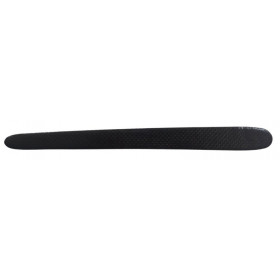 New productFrame protection carbon
New productFrame protection carbon- €1.55
-
 New productBike frame protection Lezyne chainstay protector
New productBike frame protection Lezyne chainstay protector- €6.99
-
 New productZefal mountain bike frame protector
New productZefal mountain bike frame protector- €9.99
-
 New productPlanet X mountain bike base protection
New productPlanet X mountain bike base protection- €4.49
-
 UsedLapierre frame protector
UsedLapierre frame protector- €6.99
-
 UsedCarbon road frame kit Fuentes CCM3 size 51
UsedCarbon road frame kit Fuentes CCM3 size 51- €249.99
-
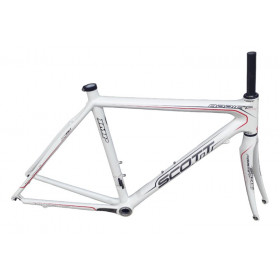 New productScott Addict R4 frame size 54
New productScott Addict R4 frame size 54- €699.99
-
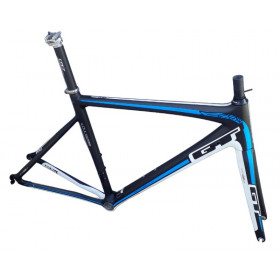 New productRoad bike frameset GT carbon Pro size L
New productRoad bike frameset GT carbon Pro size L- €699.99
-
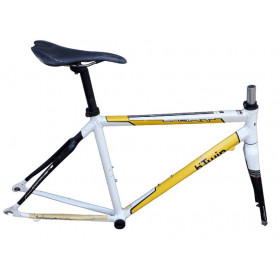 UsedBtwin sport road frame size 54
UsedBtwin sport road frame size 54- €89.99
-
 New productCube Attain Race GTC carbon road frame kit size 53
New productCube Attain Race GTC carbon road frame kit size 53- €949.99
-
 UsedOrbea Occam 29 chain protector
UsedOrbea Occam 29 chain protector- €8.99
-
 New productBicycle frame, bushing and chainstay protection
New productBicycle frame, bushing and chainstay protection- €4.90
-
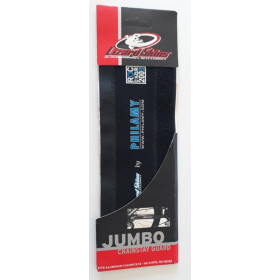 New product -50%Lizard skins Jumbo chainstay guard
New product -50%Lizard skins Jumbo chainstay guard- €5.00
- €9.99
-
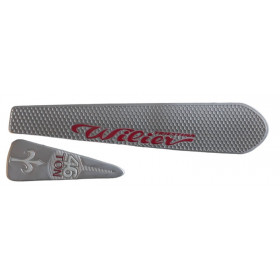 More detailsNew product Out-of-StockWilier frame protectors
More detailsNew product Out-of-StockWilier frame protectors- €4.99
Showing 1-15 of 15 item(s)
Road bike frames: everything you need to know to choose the right frame
The road bike frame is the centerpiece of your setup. It directly impacts the weight, handling, comfort, and performance of your bike. Whether you're a recreational cyclist or a seasoned racer, choosing the right road bike frame is essential to fully enjoy your rides.
In this article, we guide you through the different types of road bike frames, their features, the components that go with them, and the key criteria for selecting the right road bike frame kit suited to your riding style and budget.
1. The different road bike frame materials: pros, cons, and best uses
The road bike frame is the backbone of the bike. Its material determines the bike’s ride characteristics, comfort, durability, and overall weight. Choosing between carbon, aluminum, steel, or titanium depends on your riding level, performance expectations, and budget. Here’s an overview of the main materials used for road bike frames.
Carbon road bike frame: performance, lightness, and responsiveness
The carbon road bike frame has become the number one choice for cyclists seeking high performance. This composite material, made from woven and resin-impregnated carbon fibers, allows for great freedom in design and engineering. Manufacturers can fine-tune stiffness, flex, and tube shapes to optimize frame behavior based on the intended use (racing, endurance, gravel, etc.).
Advantages:
-
Exceptional lightness: some carbon road bike frames weigh less than 800 grams.
-
Optimal efficiency: carbon’s stiffness enables excellent power transfer while pedaling.
-
Vibration dampening: carbon naturally absorbs road vibrations, offering superior comfort.
-
Aerodynamic design: shaped tubing, integrated cables, and internal components improve airflow.
Drawbacks:
-
High cost: carbon road bike frame kits are often the most expensive on the market.
-
Impact sensitivity: though strong under normal use, carbon can crack or break under heavy impact.
-
Delicate maintenance: after a crash, a thorough inspection is necessary to detect any hidden damage.
Best for: Competitive cyclists, long-distance enthusiasts, triathletes, and riders who appreciate high-end gear.
Tip: For a well-balanced setup, choose a carbon road bike fork that matches your frame to maintain responsiveness and front-end vibration filtering.
Aluminum road bike frame: the price/performance balance
The aluminum road bike frame is a top choice for riders looking for a lightweight, responsive, and budget-friendly option. Thanks to advances in manufacturing (6061 and 7005 alloys, hydroforming), modern aluminum frames offer excellent lateral stiffness without entirely compromising comfort.
Advantages:
-
Attractive price: ideal for an affordable road bike frame that still delivers solid performance.
-
Good stiffness: perfect for acceleration, sprints, and hilly terrain.
-
Controlled weight: often under 1,500 g—much lighter than older steel frames.
Drawbacks:
-
Less comfort: aluminum transmits road vibrations more directly.
-
Shorter lifespan: the material tends to fatigue faster than carbon or titanium.
Best for: Beginner cyclists, casual riders, mid-range budgets, or as a second training bike.
Good to know: Many aluminum road bike frame kits are compatible with high-end components (disc brakes, thru-axles, internal cable routing), making them a solid foundation for a custom build.
Steel or titanium road bike frames: comfort, elegance, and durability
Steel and titanium road bike frames appeal to a loyal community of riders who value timeless bikes that are both comfortable and reliable. While less common in competitive circuits, these materials are highly appreciated for their smooth ride feel, classic aesthetics, and long-lasting durability.
Steel road bike frame:
-
Outstanding comfort: steel naturally absorbs road vibrations for a smooth ride.
-
Exceptional strength: in the event of a crash, steel bends rather than breaks—and can often be repaired.
-
Vintage or handcrafted look: ideal for those who love beautiful, timeless bikes.
Titanium road bike frame:
-
Lighter than steel, with the same springy ride quality.
-
Rust-proof: titanium does not corrode, making it ideal for all-weather or high-mileage use.
-
Virtually unlimited lifespan: a well-maintained titanium frame can last a lifetime.
Drawbacks:
-
High cost, especially for titanium.
-
Limited availability in mass-market models; often crafted by artisans or high-end brands.
Best for: Touring cyclists, bikepackers, purists, and those seeking a truly exceptional ride.
Note: A steel or titanium road bike frame kit often comes with specific components such as a longer seatpost, a traditional seat clamp, or rim brakes for a simple and efficient setup.
Summary table
| Material | Weight | Comfort | Price | Durability | Best For |
|---|---|---|---|---|---|
| Carbon | ⭐⭐⭐⭐ | ⭐⭐⭐⭐ | ??? | ⭐⭐ | Performance / Racing |
| Aluminum | ⭐⭐⭐ | ⭐⭐ | ? | ⭐⭐ | Recreational Riders / Budget |
| Steel | ⭐⭐ | ⭐⭐⭐⭐ | ?? | ⭐⭐⭐⭐ | Touring / Comfort / Retro Style |
| Titanium | ⭐⭐⭐ | ⭐⭐⭐⭐ | ??? | ⭐⭐⭐⭐⭐ | High-End Touring / Longevity |
The material of your road bike frame will greatly influence how your bike feels and performs. Always consider how you'll use your bike, your body type, and your riding experience to find the frame that suits you best.
2. The specific features of a road bike frame: what truly makes the difference
Behind the apparent simplicity of a road bike frame lie key technical choices that significantly affect ride feel, pedaling efficiency, and comfort. These features directly influence the frame’s geometry, weight, cable routing, braking system, and bottom bracket type.
Here are the essential elements to consider before choosing your road bike frame.
Frame geometry: race, endurance, or aero
The geometry of a road bike frame defines the rider’s posture, the bike’s stability, and its responsiveness.
-
Race geometry: more aggressive, it places the rider in a lower position, with a longer top tube and a shorter head tube. This geometry enhances aerodynamics and power efficiency but requires greater flexibility and physical commitment. Perfect for racing or experienced cyclists.
-
Endurance geometry: more relaxed, it offers a more upright and comfortable riding position. Reach is shorter, stack is higher. Ideal for long rides, sportives, or recreational cycling.
-
Aero geometry: found on triathlon or time trial bikes, this geometry features aerodynamic tube shapes, larger tubing, and integrated components to maximize speed. Often paired with a carbon frame kit, it’s best for cyclists focused on flat-terrain efficiency.
Good to know: A compact frame with shorter seat stays and a tighter rear triangle enhances agility and responsiveness.
Frame weight: a key factor for performance
Frame weight varies depending on the material, design, and size.
-
A high-end carbon road bike frame can weigh between 700 and 1,000 g, offering ideal lightness for climbing and quick accelerations.
-
An aluminum frame typically weighs between 1.2 and 1.6 kg.
-
Steel or titanium frames usually weigh between 1.5 and 2 kg, but they compensate with comfort and durability.
The total weight of the road bike frame kit (frame + road bike fork) is a key performance factor, especially for racing or performance-oriented builds.
Tip: beyond just weight, consider the overall bike balance—stiffness, handling, and compatibility with components like the rear wheel or seatpost.
Cable routing: internal or external
Cable routing affects aesthetics, aerodynamics, and maintenance ease.
-
Internal routing: brake and derailleur cables run inside the frame, creating a sleek look and better aerodynamics. Many modern carbon frame kits offer full integration, sometimes even including the headset system.
-
External routing: easier to maintain, especially for beginners or long-distance riders far from bike shops. Still common on aluminum and steel frames.
Whether internal or external, the cable guide system should ensure smooth shifting, housing durability, and proper sealing.
Braking system: rim or disc brakes
Road bike frames are now typically designed for one of two braking systems:
-
Rim brake frames: lighter, more traditional, and easier to maintain. Best for dry conditions or light racing.
-
Disc brake frames: require specific mounts (flat mount or post mount), adapted cable routing, and thru-axles. Disc brakes offer consistent stopping power, even in bad weather.
It's crucial to check that your chosen road frame is compatible with your preferred braking system, as rim and disc setups are not interchangeable without changing the frame.
Bottom bracket standards: threaded, pressFit, BB86...
The bottom bracket is where the crankset is mounted. Several standards exist, depending on the brand and frame type.
-
Threaded (BSA): simple, reliable, and easy to maintain. Common on steel and aluminum frames.
-
PressFit / BB86 / BB30 / PF30: these press-fit systems are common on carbon frames. They help reduce weight and widen the shell for increased stiffness, but can be noisier or trickier to maintain.
Each road bike frame kit specifies the compatible bottom bracket standard. It’s essential to choose a crankset that matches this standard.
Key features to remember
| Feature | Function | Impact |
|---|---|---|
| Geometry | Defines rider position and handling | Comfort, performance, usage type |
| Frame weight | Influences responsiveness and climbing | Lighter = better efficiency |
| Cable routing | Aesthetics and aerodynamics | Internal = modern look, External = easy service |
| Braking system | Determines brake compatibility | Rim = lightweight, Disc = power & control |
| Bottom bracket | Crankset mounting system | Must match exact standard |
A road bike frame is more than just its shape or weight—each technical detail influences the bike’s overall performance and feel. Choosing the right features ensures a bike that suits your needs, your riding style, and your expectations.
3. The road bike frame kit: what does it actually include ?
Choosing a road bike frame kit is a crucial step in building a custom bike. It forms the foundation of your setup and determines the geometry, component compatibility, and customization options. But what exactly does a road bike frame kit contain? Which components are always included, and which vary depending on the brand or model?
Here’s a detailed look at what you can expect from a complete road frame kit.
The core of the kit: the road bike frame
Naturally, the centerpiece of any frame kit is the frame itself. This includes the main structure:
-
Top tube
-
Down tube
-
Seat tube
-
Chainstays and seatstays (rear triangle)
The frame is typically designed for a specific type of riding: racing, endurance, gran fondo, or gravel. The material (carbon, aluminum, steel, or titanium) and geometry have a significant impact on the bike’s behavior.
Note: Be sure to check compatibility with your drivetrain (front derailleur type, cable routing, braking system, bottom bracket standard, etc.).
The matching road bike fork
The kit almost always comes with a matching fork, usually made of carbon—even for aluminum or steel frames.
Functions of the fork:
-
Steering (via the steerer tube)
-
Supporting the front wheel
-
Absorbing road vibrations
-
Housing the front brake (rim or disc, depending on the model)
It’s essential that the fork and frame offer consistent stiffness for precise handling.
The road bike headset
The headset is often included in the kit. It enables smooth rotation of the fork within the frame, using integrated or semi-integrated bearings.
It typically consists of:
-
Cups
-
Bearings
-
Races
-
Fork crown race
-
Compression ring
On modern frames, the headset may also include internal cable routing (full integrated cockpit), which requires careful assembly.
Seatpost clamp and sometimes the seatpost
The seatpost clamp is a small but essential component that secures the seatpost inside the seat tube.
Depending on the model, you may receive:
-
An external clamp (classic design, with bolt or lever)
-
An integrated clamping system (common on carbon frames)
Some carbon road bike kits come with a proprietary seatpost, often shaped for aerodynamics and sometimes made of carbon.
Thru-Axles (or Quick Releases)
Thru-axles are increasingly common, especially on disc brake road frames. They improve stiffness and braking precision.
Modern road frame kits usually include:
-
Front thru-axle (12x100 mm)
-
Rear thru-axle (12x142 mm)
Tip: Always check axle standards before purchasing your road wheels and fork.
Accessories sometimes included depending on the brand
Depending on the brand or product range, some road bike frame kits may also include useful extras:
-
Road bottle cages: one or two may be included, along with the correct bolts.
-
Mounts for road bike fenders: ideal for endurance or winter builds.
-
Integrated road brakes: found on some aero or high-end frames (mainly rim brake models).
-
Specific cable guides: for internal or electronic setups (Di2, EPS).
-
Headset spacers: to adjust cockpit height.
-
Spare derailleur hanger: a delicate part, often provided as a backup.
Contents of a road bike frame kit
| Component | Included in the Kit | Notes |
|---|---|---|
| Road bike frame | Always | Core element of the kit |
| Road fork | Almost always | Usually carbon |
| Headset | Generally included | Integrated or semi-integrated |
| Seatpost clamp | Often | Specific to the frame |
| Seatpost | Sometimes | If the frame uses a proprietary format |
| Thru-axles | Depends on model | Especially with disc brakes |
| Bottle cage, fender mounts | Optional | On some endurance-oriented frames |
| Cable guide, spacers | Sometimes | Useful for setup |
Why choose a road bike frame kit ?
Buying a road bike frame kit means opting for full customization, tailored performance, and the satisfaction of building your own bike. It’s aimed at passionate cyclists who want to control every component of their build—from the rear road wheel to the brakes, bottom bracket, seatpost, and even the cable routing system.
4. Choosing your road bike frame based on your riding style
Selecting a road bike frame isn’t just a matter of budget or material. Above all, it should suit your riding style—whether it's racing, long-distance rides, bikepacking, or leisure use. Every cyclist has unique needs, and every road bike frame offers specific technical benefits. Here’s how to choose the right one for your profile.
For racing: performance first
If you're riding for performance, speed, and precision, a carbon road bike frame is essential. It’s the benchmark material in competition thanks to its outstanding dynamic properties.
What to look for:
-
An ultra-lightweight frame, sometimes under 800g, for better climbing efficiency
-
Racing geometry: low position, long reach, high-speed stability
-
A road bike frame kit with a carbon fork, internal cable routing, and narrow tire clearance (25 to 28mm tires)
-
Aerodynamic profiles: shaped tubes, aero seatpost, integrated or flat-mount disc brakes
Pair this frame with a precise headset, a stiff bottom bracket, and a lightweight rear road wheel to maximize performance.
For endurance, long distances, and bikepacking
Long rides, brevets, or bikepacking trips call for a more comfortable and versatile road frame. Here, the focus is not on pure speed but on endurance, stability, and cargo capacity.
Key features:
-
Endurance or gran fondo geometry: more upright position, less strain on the back and neck
-
Vertical compliance: more flexible rear stays, more forgiving seatpost
-
Wider tire clearance: fits 32mm tires or more
-
Mounting points for bags and fenders: inserts on the seatstays, fork, or under the down tube
-
Steel or titanium frame, or comfort-oriented carbon, to dampen road vibrations
A good endurance road frame kit often includes:
-
Internal cable routing
-
Double bottle cage mounts
-
Fender or rack mounts
-
A cable guide designed for clean routing
This is the ideal setup for fans of bikepacking, touring, or long days in the saddle.
For budget-friendly or leisure riding: accessible without compromise
Are you new to road cycling or looking to build a solid yet affordable bike? A budget-friendly aluminum road frame is a great solution. Lightweight, stiff, durable, and cost-effective, aluminum offers excellent value for money.
Advantages of an aluminum frame:
-
Affordable price: great for building a complete bike without breaking the bank
-
Good stiffness for responsive pedaling
-
Durable: resistant to impacts and aging
-
Easy maintenance, especially with external cable routing
Even with an aluminum frame, you can build a high-performing road bike by combining:
-
A carbon fork to absorb road vibrations
-
A standard bottom bracket (BSA threading), reliable and easy to service
-
Classic rim brakes or mechanical disc brakes
-
An aluminum seatpost, a sturdy seatpost clamp, and an aluminum rear wheel
This type of frame is perfect for casual rides, weekend outings, or even a first step into amateur racing.
Summary by riding style
| Riding Style | Recommended Material | Geometry | Key Features to Look For |
|---|---|---|---|
| Racing | Carbon | Sporty/Race | Aero frame, lightweight, integration, disc brakes |
| Endurance / Bikepacking | Comfort carbon, steel, titanium | Gran fondo | Fenders, wide tires, mounting points, comfort |
| Budget / Leisure | Aluminum | Versatile | Carbon fork, rim brakes, simplicity |
Choosing a frame means choosing a bike that reflects you
Whether you're dreaming of climbing legendary mountain passes, embarking on a bikepacking adventure, or enjoying a fast weekend ride, the right road bike frame makes all the difference. Take time to assess your real needs, your terrain, and your budget to find the frame that will serve as the foundation of a coherent, durable, and upgradeable bike build.
5. Components compatible with your frame
Buying a road bike frame—whether on its own or as part of a road bike frame kit—isn’t enough: you must also ensure that all the components you plan to install are fully compatible. Format mismatches, installation errors, or poorly fitted parts can quickly turn your project into a frustrating puzzle.
Here are the key elements to check before finalizing your build.
Rear road wheel: watch out for axles and spacing
The rear road wheel must match the specifications of the frame. Pay attention to the following:
-
Axle type: most modern frames use thru-axles (12x142 mm rear, 12x100 mm front), which are stiffer and more secure than quick-release skewers (QR).
-
Dropout type: some dropouts are specific to certain derailleur standards, such as UDH or direct mount.
-
Hub width (spacing): modern frames often use the 142 mm standard, but some gravel or endurance models may use the 148 mm Boost standard.
Tip: Also check compatibility with the brake type (disc or rim) and, if using disc brakes, the rotor mount standard (Centerlock or 6-bolt).
Road bike headset: a commonly overlooked element
The headset allows the fork to rotate within the head tube. There are several types, and each must match the frame's head tube dimensions and design.
Main variants:
-
Integrated headset: bearings sit directly in the frame.
-
Semi-integrated: cups are pressed into the frame, with bearings sitting in them.
-
Tapered headset (1-1/8” top, 1-1/4” or 1-1/2” bottom): increasingly common for added front-end stiffness.
An incompatible headset can cause play, creaking noises, or premature wear.
Road bike bottom bracket: a crucial standard
The bottom bracket is another critical compatibility point. There are numerous standards depending on the frame and crankset brands. A mismatch can lead to installation issues or persistent creaking.
Most common standards:
-
BSA threaded: reliable and easy to maintain (68 mm width)
-
PressFit (BB86, BB30, PF30, BB386EVO, etc.): wider shells requiring precise installation
-
T47: a modern compromise between threading and PressFit
Make sure the bottom bracket matches the crank axle diameter (24 mm, 30 mm, DUB, etc.) and is compatible with the frame standard.
Road bike seatpost: standard or custom format?
The road bike seatpost format varies significantly depending on the frame design:
-
Round (commonly 27.2 mm or 31.6 mm): the most widely used standard
-
D-shape: an aerodynamic shape often brand-specific (e.g., Cervélo, Trek)
-
Integrated Seatpost (ISP): found on some carbon frames, molded into the frame itself, requiring cutting and specific clamping hardware
Don’t forget the seatpost clamp, which must match the exact outer diameter of the seat tube (e.g., 31.8 mm, 34.9 mm).
Road bike brakes: disc or rim—everything must be accounted for
The braking system directly influences the frame’s design. You cannot install disc brakes on a frame designed for rim brakes, and vice versa.
Two main options:
-
Disc brakes: now the dominant choice, using Flat Mount (road standard) or Post Mount (less common on road bikes)
-
Rim brakes: still found on older frames or lightweight climbing models
Also verify:
-
Caliper compatibility with the fork and seatstays
-
Presence of disc brake mounts
-
Cable routing: some disc brake frames are designed for hydraulic systems only
Compatibility checklist
| Component | Key Elements to Verify |
|---|---|
| Rear road wheel | Axle type, dropout compatibility, hub spacing, brake type |
| Road bike headset | Type (integrated, semi-integrated), fork taper, inner/outer diameters |
| Bottom bracket | Frame standard, crank axle diameter, shell diameter and width |
| Seatpost | Format (round, D-shape, ISP), diameter, frame compatibility |
| Brakes | Type (rim or disc), caliper mount (Flat/Post), cable routing compatibility |
| Seatpost clamp | Exact diameter, compatibility with seatpost and frame |
Assembly tip
When choosing a road bike frame kit, always consult the manufacturer’s technical documents. They specify all the necessary standards (brakes, fork, bottom bracket, headset, etc.), helping you avoid incompatible purchases or expensive workarounds. And if you’re building the bike yourself, don’t hesitate to involve a professional for delicate operations like bearing pressing, headset installation, or bottom bracket fitting.
Conclusion: the right road bike frame is the foundation of a great bike
Choosing the right road bike frame means balancing your goals, riding style, and budget. Whether you're aiming for performance with a carbon frame, versatility with an aluminum kit, or the unique feel of a steel frame, there are countless options to build the bike of your dreams. Most importantly, a well-chosen frame is one that makes you want to ride—again and again.
